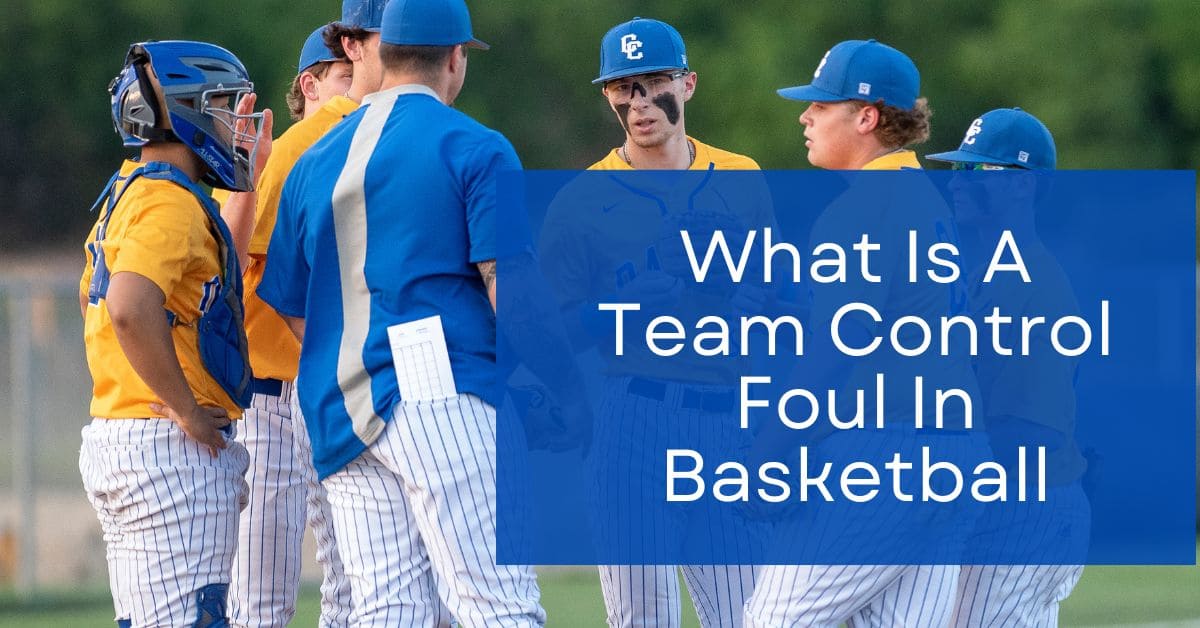In basketball, fouls are a critical part of the game, but not all fouls are the same. One type of foul that can be somewhat confusing to fans and players alike is the team control foul. Understanding what constitutes a team control foul and its implications is important for both players and coaches.
In this blog post, we’ll explore the concept of team control fouls, how they differ from other types of fouls, and their effects on the game.
Understanding Team Control Fouls
A team control foul occurs when a player commits a foul while their team is in possession of the ball. However, unlike other fouls, it does not result in free throws. If the foul occurs during a shot, it is considered a shooting foul, not a team control foul. The team that commits a team control foul loses possession of the ball, but no points are awarded to the opposing team.
This is a key distinction between team control fouls and personal fouls, which typically result in free throws or the continuation of play.
Key Features of a Team Control Foul:
- No Free Throws: Team control fouls never result in free throws, even if the team is in the bonus or the foul occurs during a shooting attempt. If a player fouls during a shot, it’s considered a shooting foul, not a team control foul.
- Possession Loss: The team committing the foul loses possession of the ball, and it is turned over to the other team.
- Personal Foul vs. Team Control Foul: A team control foul is a specific type of personal foul that only occurs when the fouling team has control of the ball.
Team Control Foul in Different Scenarios
A team control foul can happen in various scenarios, but it typically arises when a player commits a foul while their team is in possession of the ball, and the foul is not during a shot attempt. Below are a few examples of how a team control foul might occur:
Common Scenarios Leading to Team Control Fouls:
- Offensive Fouls: An offensive player commits a foul while trying to drive to the basket, such as pushing or charging into a defender. In this case, the offensive player is penalized, and possession is turned over.
- Player Movement: A player may commit a foul while dribbling or making a pass. For example, if a player elbows an opponent while attempting to dribble, this can result in a team control foul.
- Illegal Screens: Setting a moving or illegal screen while your team has the ball can also lead to a team control foul. The offensive team loses possession, and the opposing team gains the ball.
What Happens After a Team Control Foul?
Once a team control foul is called, the fouling team loses possession of the ball. The opposing team is then awarded possession, and play continues from that point. However, there are some additional rules that can affect the situation:
- Turnovers: Since team control fouls result in a turnover, the fouling team effectively loses the chance to score and gives the opposing team an opportunity to gain possession and potentially score.
- Team Foul Count: Even after reaching the team foul limit, team control fouls do not result in free throws. The opposing team is awarded possession instead.
Differences Between Team Control Fouls and Other Fouls
To clarify the importance of a team control foul, it’s helpful to understand how it differs from other types of fouls in basketball:
| Type of Foul | Description | Impact | Free Throws? |
|---|---|---|---|
| Team Control Foul | Occurs when the fouling team has possession of the ball. | Loss of possession; no free throws unless shooting. | No, unless shooting. |
| Personal Foul | A player commits a foul against an opponent. | Can lead to free throws if the opponent is in the act of shooting or after the team reaches the penalty. | Yes, if shooting or team is in penalty. |
| Shooting Foul | A player fouls an opponent while they are attempting a shot. | Free throws awarded to the fouled player. | Yes, if shooting. |
| Technical Foul | A non-contact foul, often for unsportsmanlike conduct. | Results in free throws and possession change. | Yes, for the opposing team. |
| Flagrant | An excessive or violent foul, often involving unnecessary contact. | Free throws and possession for the opposing team. | Yes, typically two free throws. |
Why Are Team Control Fouls Important?
Team control fouls can have significant consequences during a game. Since these fouls result in a turnover, the fouling team loses the opportunity to continue their offensive play. This can be a momentum shift, especially in close games.
Understanding the nuances of team control fouls can also influence coaching strategies. Teams may adjust their offensive or defensive tactics to avoid unnecessary fouls and preserve possession.
Implications of Team Control Fouls in Key Moments:
- Close Games: In tight matchups, losing possession due to a team control foul can be the difference between winning and losing. A team might gain an opportunity to score from the turnover.
- Foul Accumulation: Team control fouls count toward the team’s total fouls, but they do not result in free throws, even if the team is over the foul limit. However, once in the bonus, other non-shooting defensive fouls will result in free throws.
Conclusion
A team control foul is an important concept in basketball that emphasizes the possession aspect of the game. While it does not result in free throws, it can still have a major impact by causing the fouling team to lose possession of the ball. By understanding team control fouls, players and coaches can better manage their fouls and play smarter basketball.
This understanding can lead to more effective strategies and improved decision-making, ultimately giving teams an edge in controlling the flow of the game.
Hey there! I'm Adam Martinez, and I'm the proud owner of TeamNamesify. With over 7 years of experience in this field, I've dedicated myself to delivering the best quality and most accurate content possible. My goal is simple: to provide you with content that exceeds your expectations every time.





